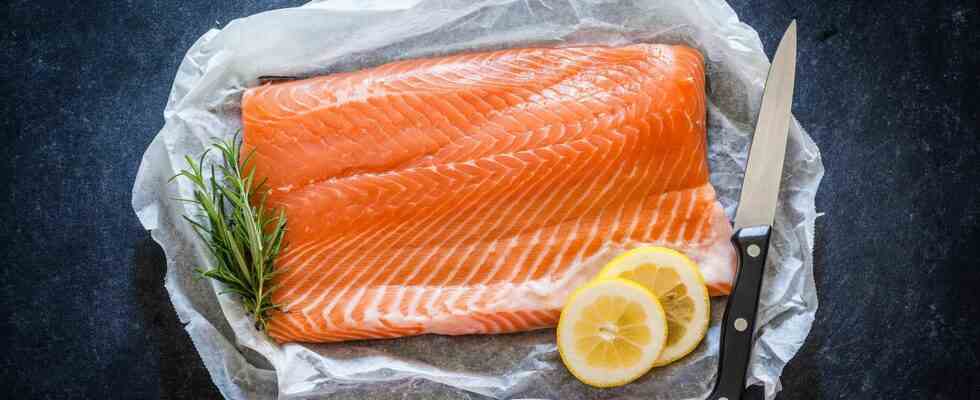Consumer show “Market”
Expert tests vegan fish alternatives: “Globbery slime”
Do the plant-based replicas come close to the real salmon taste?
© fcafotodigital / Getty Images
Man loves fish. So much so that he eats more of it than is good for stocks. Vegan alternatives should bring relief. But do the artificial replicas live up to the original? Chef Moritz Freudenthal did the test.
It says fish on it, but there is no animal inside. Chef and fish expert Moritz Freudenthal tasted vegan fish fingers and salmon alternatives for the NDR consumer program “Markt”. In his opinion, real fish, he said before the first bite, could not be substituted. Can the alternatives change his mind?
Vegan meat and fish alternatives are trendy. The prices also reflect this. If you shop in the discounter Aldi, for example, you have to pay more than twice as much for the animal-free fish stick variant as for the original. 51 cents are due for 100 grams of the vegan alternative. The plant-based sticks from Iglo cost even more at 98 cents, making them eleven percent more expensive than the animal sister products from the same company. The vegan fish fingers cost eleven percent more. Gutfried provided the most expensive alternative in the test. The company charges 1.59 euros. A price that pays off?
“Nothing fishy” about the fish alternative
According to the expert, the Gutfried sticks taste more like a vegetable patty. And even the Iglo product does not convince Freudenthal. The smell reminds him of chicken, the consistency is rather mushy. And taste? “Very far away,” he judges. The discounter fish fingers from “Veganz” make the best impression – at least at first glance. Because what Freudenthal has on his plate looks and smells like the original, but definitely tastes like soy.
Even with the animal-free salmon alternatives, which are priced between 1.99 and 4.99 euros, the manufacturers have a hard time imitating them. Neither Veganz’ replica smoked salmon nor Sofine’s plant-based salmon fillet were able to convince the chef. The first thing, he says, is “something gooey with the aroma of smoke” and the fillet doesn’t stand up to the test either, both visually and in terms of taste. “Nothing fishy,” says the chef, “not at all comparable in taste to salmon”. Only the vegan sashimi salmon from Vegan Zeastar surprised. Although the consistency of this product is rather slimy, the look and aroma are right. “The taste is reminiscent of salmon, I really have to say,” says Freudenthal. But what it’s made of hits the stomach.
Questionable additives
The fact that the vegan sashimi salmon comes so close to the original is partly due to the coloring agent titanium dioxide. However, it is now banned in food, only remaining stocks may be sold. And another additive that is on the list of ingredients in three out of six substitute products in the test spoils the appetite: methylcellulose. Although the thickener is approved as an additive, nutritionist Martin Smollich from the Schleswig-Holstein University Hospital considers this ingredient to be “questionable”. He speaks of evidence from animal experiments that this substance damages the intestinal mucosa. It is not known whether this is also the case in humans. But it cannot be ruled out either.
The big advantage of vegan fish alternatives is that they protect fish stocks. After all, almost 35 percent of the world’s fish stocks are already considered overfished. For the plant-based alternatives, consumers like to dig a little deeper into their wallets and accept compromises in terms of taste. However, it is worth looking at the list of ingredients. Because most plant-based replicas are highly processed, the list of ingredients is long. According to “NDR”, nutritionists therefore generally advise against “frequent consumption of such highly processed foods, as they can have a negative impact on intestinal health”.
The full-length contribution from the NDR consumer program “Markt” is available here.



